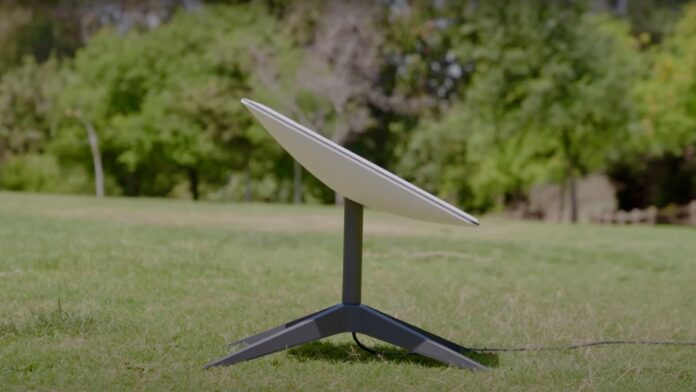It looks like SpaceX is already working on next-generation dish hardware for its Starlink satellite internet service, according to FCC documents.
On Tuesday, the FCC granted(Opens in a new window) SpaceX a temporary license to test “new user-terminal hardware.” A document(Opens in a new window) from the company adds the test will cover “next-generation phased array antennas” designed to connect to Starlink satellites.
The hardware will include both fixed position Starlink dishes and those that can be used in motion, such as on a car, boat, or plane. The company plans on testing up to 200 models, featuring dimensions “not to exceed 0.586 by 0.385″ meters in size (23 inches by 15.1 inches).
That means hardware will be slightly larger than the second-gen Starlink dish for residential customers, which was introduced in November 2021. It too has a rectangular shape, but with the dimensions at 0.513 by 0.303 meters (20 inches by 11.9 inches). Meanwhile, the first-generation Starlink dish adopted a circular shape with a 23.2-inch diameter.
“This testing will allow SpaceX to characterize the performance of these user terminals under a wide range of conditions and to measure the RF (radio frequency) density of emissions from these user terminals,” the company said(Opens in a new window) in a filing with the FCC.
Recommended by Our Editors
The 200 models will also consist of “multiple potential user configurations,” but all will be designed to receive downloads and uploads over the 10.7GHz to 12.7GHZ and 14GHz radio bands. The FCC license allows SpaceX to test the hardware in five locations, including Los Angeles; Mountain View, California; Redmond, Washington; Riverton, Wyoming; and Cape Canaveral, Florida.
The testing indicates SpaceX might be preparing to upgrade the dish hardware for Starlink in the near future. The company’s goal is to eventually offer gigabit internet speeds over its satellite internet system. It’s also been working to decrease the manufacturing costs for the Starlink dish. But in the meantime, SpaceX is trying to reduce the network congestion facing Starlink, which has been dragging down the speeds.
Get Our Best Stories!
Sign up for What’s New Now to get our top stories delivered to your inbox every morning.
This newsletter may contain advertising, deals, or affiliate links. Subscribing to a newsletter indicates your consent to our Terms of Use and Privacy Policy. You may unsubscribe from the newsletters at any time.
Hits: 0
















